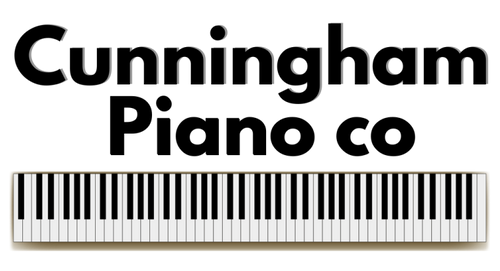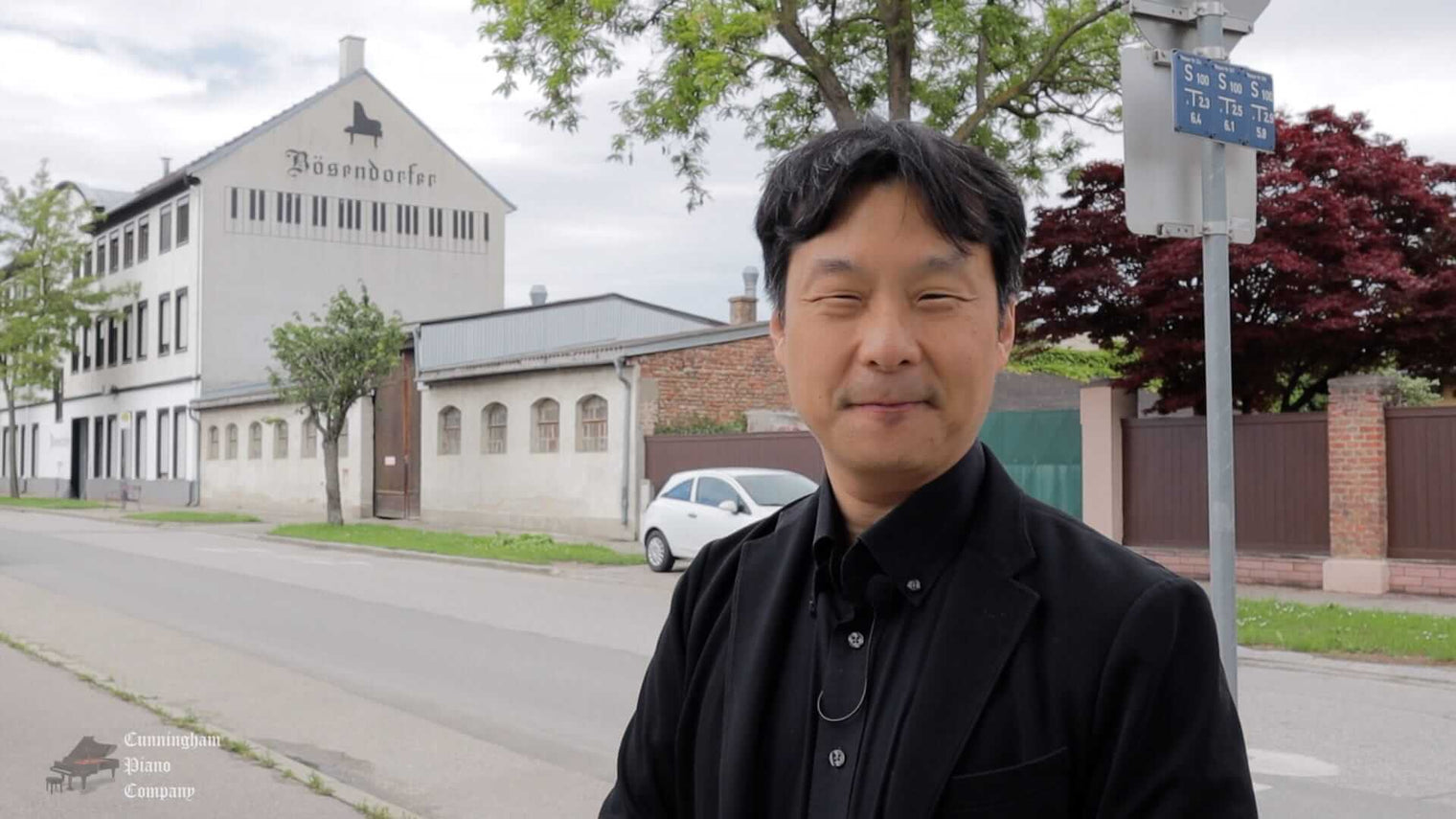What goes into building the world's finest - and most expensive - pianos? I was recently invited to record an album with international flute superstar Jasmine Choi at the famed Bösendorfer piano factory. We recorded in the factory showroom for three days on a magnificent 9' Bösendorfer Model 280 VC! After the recording sessions were done, I had an opportunity to tour the actual factory itself to see how these amazing pianos are crafted.
This tour actually starts in the city of Vienna, the birthplace of Bösendorfer pianos. Vienna is filled with historic architecture that was around during the time of Haydn, Mozart, and Beethoven. The Bösendorfer factory is located in Wiener Neustadt, a quiet suburb about 45 minutes’ drive south of Vienna. They have combined a beautiful new showroom selection center with their traditional factory. Their piano building techniques include tasks that have not changed in 200 years combined with some of the most advanced computer aided design technologies.
1:59 Here in a huge area behind the factory, you can see where it all begins. Bösendorfer uses carefully selected spruce in every piano they make. This wood is carefully chosen from high altitude regions in the Austrian alps and only harvested during the winter months when the sap is dormant. The wood is left to air dry naturally for up to 5 years. Bosendorfer is the only piano manufacturer that does not use Kilns to dry any of the wood used in the production of their pianos. In addition to spruce, Bösendorfer uses a variety of other woods, like beech and maple.
2:38 Next, before the wood is used, it spends additional months in a humidity controlled area. This slow process prepares the world’s most carefully chosen tone wood for use in a Bosendorfer piano, without ever kiln drying. Each piece of wood is carefully labeled and catalogued in their inventory system.
2:58 On the first floor, the raw wood is now ready to be cut and shaped into piano parts. One very special type of cut that is applied is called a kern - thin cuts that allow a solid piece of spruce to be shaped into the outer piano rim. This is the main technique for creating Bösendorfer’s signature resonating rim, as opposed to thin strips of laminated hardwoods that other piano manufacturers use.
3:25 Bösendorfer has updated some of the woodworking that was traditionally done by hand. Today, they use special CNC routers to create some of the fine ornamental details of each cabinet, as well as some of the joint cuts necessary for strength and structural integrity. Each piece is cut with absolute precision. 3:46 Here we see a sand cast iron plate that has been freshly cleaned after spending at least one full year in the Austrian weather. This assures that the slow curing iron, ideal for tone, has eliminated any internal stresses that might interfere with its given purpose, to be the heart of a Bosendorfer. 4:06 Each plate goes through a 5 step process which includes 2 different primers. It was once said that Bosendorfer spends more time on their plate than many manufacturers spend on their entire piano! This is obvious as I watch the care taken with each and every frame that will become a Bösendorfer. Their signature bronze is beautiful, but custom colors of any kind can be chosen, even gold leaf with real gold! 4:33 On the second floor, we start to see the pianos taking shape. The rim (and posting) is the main wooden structure that supports the famous tone of a Bosendorfer. This is where there is no substitute for hand work. Every Bosendorfer has a wooden structure that is built with traditional dowel techniques. There are no shortcuts taken anywhere in the assembly of these rims. Each piece used in this structure is as beautiful as the entire finished assembly is. 5:03 – Check out this interesting shape carved into the treble side of the frame. This extra opening helps enhance the tone of the highest notes. 5:13 – Again, hand work assures that the height of the bridge is exactly where it should be in relation to the each end of the string. The pressure of the string upon the bridge is called down bearing and this must be calculated perfectly. The craftsman will use a fine chisel to precisely shave the bridge for the perfect string termination point for each note of the piano. 5:35 Remember the kern cut? In this step, thin pieces of the same quality spruce fill any space left in the bending of the wood. 5:45 Gorgeous wooden cases finally meet their soundboards which are custom made to fit each piano. This workmanship is simply unbelievable. Now each piano is ready to have its custom frame installed. 6:01 – A laser pointer and jigs are used to make each hitch pin and agraffe placement completely precise. This step assures that the strings will vibrate in the exact lengths they are meant to. 6:15 – Bösendorfer makes their own bass strings, known worldwide for their incredibly rich sound. Bösendorfer winds their own steel strings with varying widths of copper wire. The copper adds mass to the string, which gives the beautiful bass sound that each Bosendorfer has. The care in which it is wound will determine the quality of tone, as well as the life of the string. 6:39 Finally, these look more like pianos! The plate has been carefully inserted and the piano begins to be strung. Notice Bösendorfer’s open pinblock design. This is labor intensive to work with, but it means that each tuning pin can fit closer to the pin block. This offers more stability in tuning and gives a fine piano technician more control as he tunes. Each hole has to be meticulously drilled by hand and the pins expertly inserted.* 7:10 Bösendorfer uses piano keys made by Kluge Klaviaturen. Each key in turn will be connected to a complex action mounted on a frame to activate the hammers. 7:23 – Each piano key operates as a simple lever, rocking on a single fulcrum point. The front of each key has a small hole, called a front rail bushing, which keeps the key from slipping side to side. Weights are added to ensure a perfectly even feel across the keys 7:42 – Here you can see the center pins which act as fulcrum points and the keybed front rails with felts. 7:50 Here we are in one of the final voicing rooms, where pianos are tested and the hammer felts are voiced as needed. 7:59 – With only 300 pianos completed each year, the result is one of the most celebrated pieces of Viennese musical tradition with a pedigree that spans back to 1828 when the very first one was produced.

